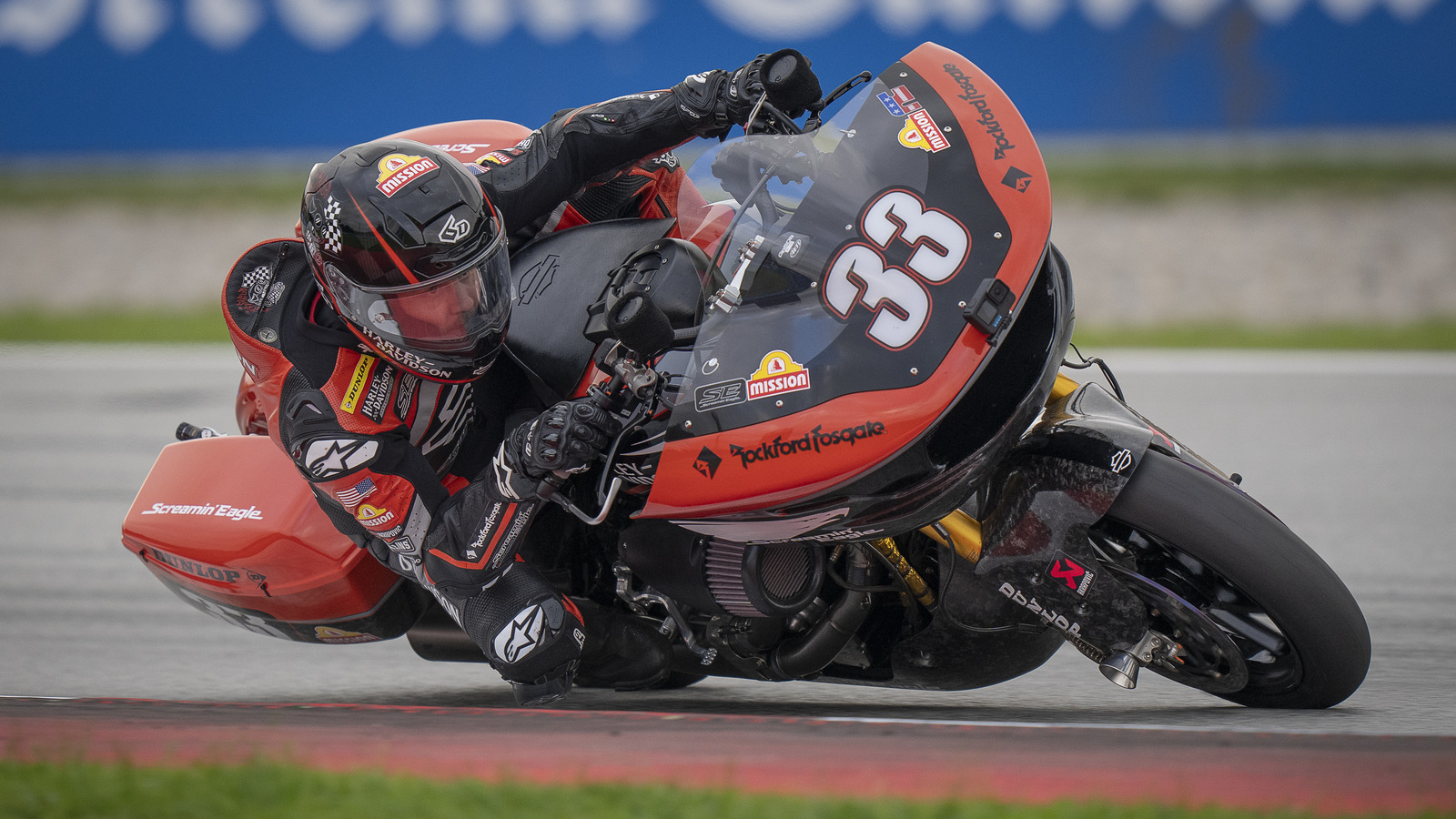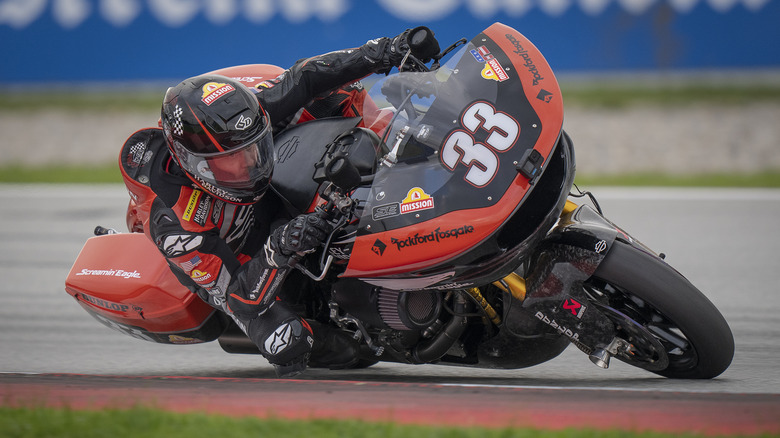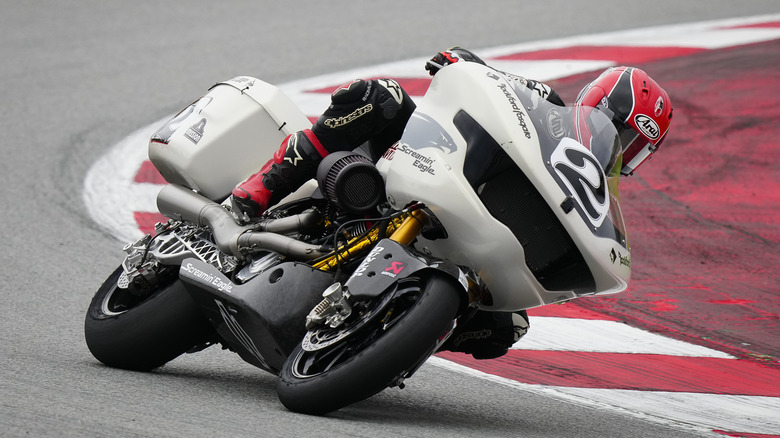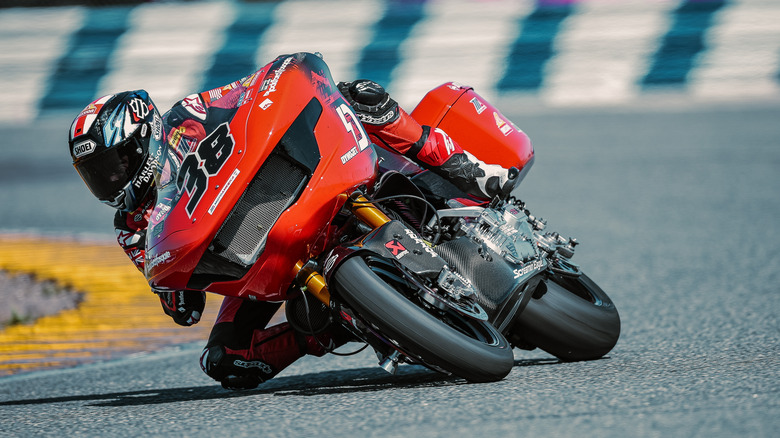Harley-Davidson underperforms in Europe. Some of the EU’s best-selling bikes are big tourers, like BMW’s boxer twins, but Harley’s models aren’t found among them. In fact, despite bikes in general selling better in Europe than the U.S., Harley sells less than a third as many bikes across the pond as it does right here. Harley now has a plan to address that, to get its brand in front of more European eyes with the help of MotoGP, but it’s not going to be the silver bullet for what ails the bar and shield in the EU.
Harley-Davidson and MotoGP announced a race series this past weekend, where six to eight Harley-supported teams will race in their own series at six MotoGP weekends across next year’s calendar. The brands see it as a win-win, with Harley getting more eyes on GP racing in America while MotoGP gets the Harley name out in Europe. There’s just one issue with Harley’s side of the bargain: Name recognition isn’t the company’s European problem.
Harley is a known quantity
Even in Europe, Harley-Davidson is an incredibly well-known brand. You only have to go back to 2016, two presidential administrations ago, to see Harley beat out Kawasaki for German market share — big American V-Twins outselling Ninjas in the land of the Autobahn. But that was nine years and two trade wars ago, and in 2024 Milwaukee captured just 3.5% of German two-wheel buyers.
European buyers didn’t forget Harley-Davidson in those intervening years, the brand still existed in the public consciousness of the continent. In fact, Harley is incredible at what marketers call brand awareness — to many, the company is synonymous with motorcycling. There’s something indescribable, insurmountable, ineffable about the Harley appeal, and that’s the kind of brand awareness that most marketers would kill for.
No, Harley’s problems in the EU lie further down the buyer funnel. Remember that, from “Glengarry Glen Ross?” It’s a real thing, a real rubric that real marketers use for real companies, and it just so happened to be the subject of many a class towards that marketing degree I got back in college. Let me share some of those learnings with you, save you the tuition.
AIDA
I regret to inform you that Alec Baldwin didn’t get the rubric perfect in “Glengarry Glen Ross.” It’s not attention-interest-decision-action, it’s awareness-interest-desire-action. Many takes on the funnel add further steps, but this basic version works for our little demonstration here. Customers are made aware of a product, some number of those customers become interested enough in the product to look into it further, some of those prospects end up wanting the thing and an even smaller group actually buy it.
Harley-Davidson’s issue isn’t awareness. In the European market, the company’s sales problem is somewhere further down the line — there’s a disconnect between all those motorcyclists who are aware of Harley, and the 3.5% that take action and buy a bike. No company is going to have a perfect track record, no one will make a buyer out of every single person who knows their brand name, but it’s clear Harley wants to pump its numbers up.
But what about racing?
Racing is often a very top-of-funnel exercise, a means to get a brand out in front of customers who won’t otherwise remember it. This is likely why, despite all the rumor milling, BMW has yet to field a team in MotoGP — the company gets its brand out there every race with its safety cars, and never has to shell out for bike development. If Harley is using MotoGP as a brand awareness effort, the company is vastly underestimating its own cachet in the EU. Awareness isn’t the problem.
Taking Harley’s baggers racing in Europe could, in theory, hit the desire part of that funnel. Harley-Davidson marketers may have specific customer sentiment analysis that shows Europeans think of American cruisers as slow or unwieldy, and the bar-and-shield may be using this series as an attempt to push back on that specific consumer thought. But a one-make race can be a tough proposition on that front, since Harley isn’t actually showing off performance prowess relative to any competitors — except, of course, the GP bikes that are sure to turn faster laps on the same tracks under identical conditions, ready for side-by-side comparison. It’s possible Harley-Davidson is banking on a broad Harley-racing-performance link in buyers’ minds, but fielding eight race teams with factory support is a very expensive way to build broad-stroke associations.
What seems more likely to be Harley-Davidson’s problem in Europe is its actual product lineup. Milwaukee makes tourers, but it doesn’t make the sort of upright, fully faired bikes that Europeans buy in droves — a Road Glide may be a perfectly comfortable long-distance cruiser, but no buyer would confuse it with a BMW R1300 RT. If that’s the market Harley wants, racing likely isn’t the most effective way to go about getting it. It’s a lot cheaper to slap some road-going fairings and lowered street suspension on a Pan America than it is to field a full race series. Give Europeans that bike, Harley, and you’ll likely see better returns.






